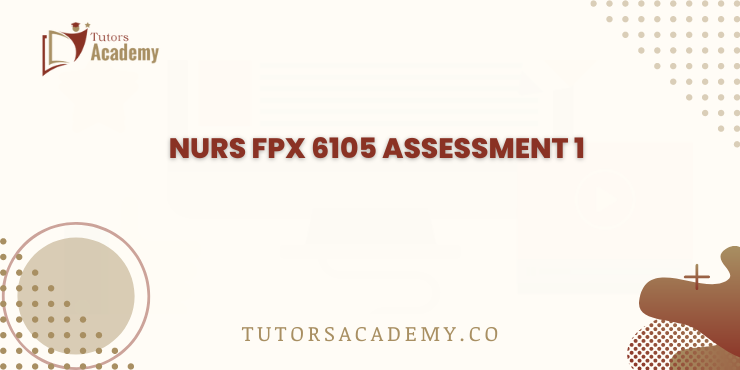
NURS FPX 6105 Assessment 1 Learning Theories and Diversity
Seeking guidance for your NURS FPX 6105 Assessment 1? Our team of experts is available to assist you. Contact us today for support.
Learning theories for this paper will be understood as the strategies and models that are part of obtaining knowledge and augmenting one’s skill set as a student nurse. These theories include behaviorism, Constructivism, and humanism, which influence teaching methods and develop a course curriculum that will best help the learning process (Waseem, 2020). The following are characteristics of diversity in nursing education: the students come from different cultural, ethnic, and economic strata, and their education levels vary. The difference in color, sex, physical ability, and thought processes ultimately strengthen the backbone of the nursing profession and enhance patient care provision because the workforce that will be produced will be a workforce that will be equipped and willing to take care of the ever-diverse patient needs from different cultural backgrounds, sexual orientations, physical disabilities and ways of thinking. The three goals of this assessment are as follows: To understand learning theories for nursing education And To gain insight into the place of diversity in the learning environment.
Identifying Learning Theory
Constructivism is a theoretical model that can be applied when designing a nursing course such as ‘Nursing Care for Geriatric Patients’ targeting nursing students. It isolates and focuses on the learner’s learning process and experience, making it suitable for nursing education practice. Knowledge-based construction is particularly relevant in a nursing course that deals with senior care since it encourages students’ participation in the certification process. Constructivism posits that students learn from real-life difficulties in an enhanced and functional approach to Geriatric nursing practice because it presents a diverse and shifting complex of patient-based issues. At the same time, constructivism as a strategy and methodology demands students to have critical thinking, analysis, and problem-solving abilities. Hence, at that point, they are helped to build upon existing knowledge and experience with senior care to develop a comprehensive concept of the subject’s core concepts.
Constructivism also supports learner-centered education, which is vital in nursing education, where the learners take an active role. In the context of senior care, this could encompass clinical examples, field activities, demonstrations, and group discussions that depict actual situations with elderly patients. The activities should help students understand the problem from various angles, develop solutions for their clinical problem-solving abilities, and propel them toward the standing cha nurse might encounter in their nursing practice (Hanklang & Sivasan, 2020). In conclusion, it is correct to affirm that Constructivism is adequate when selecting a learning theory for a nursing course on senior care, particularly for BSN students. Constructivism, when incorporated into the nursing curriculum, can foster practical care skills and knowledge needed to address the needs of the elderly population through active learning and critical problem-solving.
Justification for Using Constructivism Learning Theory
Constructivism is one of the theoretical models that can be applied when designing a nursing course such as ‘Nursing Care for Geriatric Patients’ targeting nursing students. It isolates and focuses on the learner’s learning process and experience, making it suitable for nursing education practice. Knowledge-based construction is particularly relevant in a nursing course that deals with senior care since it encourages students’ participation in the certification process. Construction posits that students learn from real-life difficulties in an enhanced and functional approach to Geriatric nursing practice because it presents a diverse and shifting complex of patient-based issues. At the same time, constructivism as a strategy and methodology requires students to have critical thinking, analysis, and problem-solving abilities. Hence, at that point, they are helped to build upon existing knowledge and experience with senior care to develop a comprehensive concept of the subject’s core concepts.
Constructivism also supports learner-centered education, vital in nursing education, where the learners actively participate in the learning process. In the context of senior care, this could encompass clinical examples, field activities, demonstrations, and group discussions that depict actual situations with elderly patients. The rationale is that the activities should help students examine the problem from various angles and develop potential solutions to improve their clinical problem-solving abilities and propel them toward the standing challenges a nurse might encounter in their nursing practice (Hanklang & Sivasan, 2020). In conclusion, it is correct to affirm that Constructivism is adequate when selecting a learning theory for a nursing course on senior care, particularly for BSN students. Constructivism, when incorporated into the nursing curriculum, can foster practical care skills and knowledge needed to address the needs of the elderly population through active learning and critical problem-solving.
Alternative Theories
Other learning theories relevant to a nursing course on senior care for students include constructivism, humanism, and postmodernism. However, one course that could be more relevant to this course is behavioral cognitivism, according to behaviorism. This theory prioritizes measurable behaviors and external factors as the substances that cause learning (Western Governors University, 2020). Suppose only behaviorism is incorporated into a nursing course. In that case, it will likely be interpreted as an approach that addresses learning without much deeper cognitive processing, where learners simply memorize material and skills. This approach is less helpful, especially for the elderly, since it may lack the solving capacity necessary to resolve the ever-emergent and intertwined needs of elderly patients (Lange et al., 2020).
Though Cognitivism focuses more on memory and information-processing mechanisms within the mind, they can only be effective if it is emphasized. Issuing information without the need for students to apply it actively may create passive learners who need encouragement to practice what they have learned in standard clinical practice (The Open University & Knowledge Technology Solutions PAC, 2020). Compassionate care is vital in geriatric care, as opposed to understanding the concept: it entails an empathetic attitude, communication skills, and general assessment of the knowledge applied to various patients (Flanagin & Lew, 2022). On the contrary, what has been known as constructivism is more suitable for the active and, especially, the practice-oriented approach essential to nursing education for properly providing care for elderly patients. Students can identify and gradually build their knowledge from the activities and reflections, so this method is more appropriate for this nursing course.

Diversity of Intended Learners
The general composition of the desired learners for nursing care for geriatric patients would be comprised of the following students: Firstly, the age group would differ significantly from the young adult student, a traditional college-going age of between 18 to 24 years, and the nontraditional student who might be above 24 years of the age but in college to obtain their degree and health care experience. This age diversity is essential as the students and classmates will come from different backgrounds and have different experiences, enhancing discussions in class and learning from each other (Abacioglu et al., 2020).
This is also relevant to cultural differences or organizations that admit students from different countries, such as nursing schools. Many nursing schools enroll students with multicultural backgrounds, so the differences are usually notable, thus highly productive in the exposure of culturally competent nurses. It emphasizes ensuring effective communication and cultural awareness when addressing older patients with different linguistic backgrounds (Hagqvist et al., 2020).
It is essential to have learners from diverse ethnic backgrounds in a nursing course specializing in elder care. The geriatric patients are derived from different cultural settings. Therefore, nursing students should be receptive to cultural diversity to meet the primary healthcare goal of providing holistic care concerning patients’ cultural beliefs. The availability of diverse learners provides a platform where participants from different cultural backgrounds share perceptions and histories of their culture. This improves the student’s understanding of creating appropriate care environments for the elderly from various backgrounds (Young & Guo, 2020).
Concisely, the participants in a nursing course on senior care are learners of diverse ages, different first languages, and various cultural backgrounds. This enhances the diversity of the learning infrastructure, enables awareness of cultural sensitivity, and prepares future nurses for delivering more culturally sensitive care to any elderly patient they encounter.
Strategies for Managing Conflicts in Diverse Learning Environments
Cooperation and conflicts in multicultural/inclusive education settings are necessary for teaching and learning. Therefore, conflict management is essential. Here are four strategies to effectively address conflicts in such settings: Here are four strategies to effectively address conflicts in such settings:
Establish Clear Expectations and Ground Rules
The initial step is setting common-sense classroom manners and courtesy guidelines. These expectations should be conveyed at the onset of the course with such reminders throughout the course as necessary. Promote tolerance for students with sensitivity to people of color and sexual orientation and support diversification of opinion. Whenever there is a problem, one has to go back to the formulated rules and sort out the specific behaviors or acts that triggered the conflict. This becomes helpful so that the student or students understand why certain behaviors are harmful.
Promote Open and Respectful Communication
Promote a caring environment for pupils in your classroom so they can freely express themselves in discussions. Ask students to share their ideas and perceptions regarding the issue of debate and accompany it with Assertive Listening and Empathetic Philosophy. Promote conflict-solving methods like courtesy speeches, meaning the use of ‘I’ say speeches, and listening skills that involve reiterating what was said by the other party. Promote peer intervention when multiple people are involved in the matter, and if it is deemed controversial, it is advisable to use a third mediator (Winter et al., 2021).
Provide Opportunities for Group Activities and Collaboration
Ensure that a number of the learning activities you plan involve students working in groups diverse groups. Integrating usually prepares students for the real world and can assist them in understanding the value of differences from other classmates. In case of resistance and contradictions in groups, they give students a great chance to work on their conflict-solving skills and increase the extent of their experience in terms of appreciation of others’ opinions. It is good to encourage group activities so that students and teaching assistants can learn from their peer’s ideas and discoveries. Still, at the same time, faculty members should be available to moderate the sessions to ensure that only positive discussions ensue (Riese et al., 2021).
Offer Resources for Conflict Resolution
Make conflict resolution contacts available to students, such as counseling centers, diversity or inclusion offices, or a few selected/rated faculty/employees, for conflict resolution. Hurry can be natural, so ask students to seek help when they feel they cannot handle something. Again, help them know they can report any conflict, which will be kept in the classroom. Some of the things formulated in the agreement are that faculty and staff should be knowledgeable about conflict resolution practices and be ready to intervene if there are allegations of misconduct between parties or facilitate further discussions between the conflicting parties if that is needed (Maeda, 2021).
Overall, it is pivotal to acknowledge that addressing and preventing conflicts in diverse classroom and learning environments is a complex process that should be conducted through the implementation of various strategies aimed at preventing conflicts, as well as through open and effective communication of the need for following the principles of respecting privacy and cultural differences. By implementing these strategies, faculty,y, and staff can help achieve proper intervention in conflict incidences, promote good inter-student relationships and conflict management skills, and embrace tolerance for diversity.
Conclusion
Fourthly, it is crucial for the comprehension of the given topic to state that using learning theories such as Constructivism in mentoring nursing students while paying attention to the diversity of the students in terms of age, language, and cultural factors is also extremely important for the development of a more exhaustive and diverse curriculum. Thus, if more nursing programs can incorporate strategies in reaching out to learner excellence and differentiate their teaching techniques to address various learner characteristics, students can be well prepared to address the needs of more elderly patients requiring quality care as they overcome hurdles and try to make a difference in an increasingly diverse global community.
Click below to explore more related samples:
NURS FPX 6025 Assessment 5
References
Abacioglu, C. S., Volman, M., & Fischer, A. H. (2020). Teachers’ multicultural attitudes and perspective-taking abilities are factors in culturally responsive teaching. The British Journal of Educational Psychology, 90(3), 736–752.
https://pubmed.ncbi.nlsenior/31814111 /
Davidson, A., Bekhinkosi Zigori, Ball, L., Morgan, M., Gala, D., & Reidlinger, D. P. (2023). Family carers’ experiences and perceived roles in interprofessional collaborative practice in primary care: A constructivist grounded theory study. Health Expectations.
https://doi.org/10.1111/hex.13828
Flanagin, A. J., & Lew, Z. (2022). Individual inferences in web-based information environments: How cognitive processing fluency, information access, active search behaviors, and task competency affect metacognitive and task judgments. Media Psychology, pp. 1–19.
https://doi.org/10.1080/15213269.2022.2085116
Hagqvist, P., Oikarainen, A., Tuomikoski, A.-M., Juntunen, J., & Mikkonen, K. (2020). Clinical mentors’ experiences of their intercultural communication competence in mentoring culturally and linguistically diverse nursing students: A qualitative study. Nurse Education Today, 87.
https://doi.org/10.1016/j.nedt.2020.104348
Hanklang, S., & Sivasan, S. (2020). Effectiveness of the project-based learning program on Thai nursing student competency for elderly care in the community. Journal of Health Research, 35(2), 132–146.
https://doi.org/10.1108/jhr-07-2019-0160
Lakin, J. R., Arnold, C. G., Catzen, H. Z., Rangarajan, A., Berger, R. S., Brannen, E. N., Cunningham, R. J., Schaffer, A. C., Lamey, J., Baker, O., & Bernacki, R. E. (2021). Early serious illness communication in hospitalized patients: A study of implementing the Speaking About Goals and Expectations (SAGE) program. Healthcare, 9(2), 100510.
https://doi.org/10.1016/j.hjdsi.2020.100510
Lange, A.-K., Koch, J., Beck, A., Neugebauer, T., Watzema, F., Dockweiler, C., & Wrona, K. J. (2020). Learning with virtual reality in nursing education – A qualitative research study using the UTAUT Model (Preprint). JMIR Nursing, 3(1).
Maeda, D. (2021). CPublicheads of secondary schools and teachers in Hai District. Practice conflict management approaches Theses & Dissertations.
https://ecommons.aku.edu/theses_dissertations/1994/
Marougkas, A., Troussas, C., Krouska, A., & Sgouropoulou, C. (2023). Virtual reality in education: A review of the last decade’s earning theories, approaches, and methodologies Electronics, 12(13), 2832.
https://doi.org/10.3390/electronics12132832
O’Connor, S., Kennedy, S., Wang, Y., Ali, A., Cooke, S., & Booth, R. G. (2022). Theories informing technology enhanced learning in nursing and midwifery education: A systematic review and typological classification. Nurse Education Today, 118(118), 105518.
https://doi.org/10.1016/j.nedt.2022.105518
Riese, E., Lorås, M., Ukrop, M., & Effenberger, T. (2021). Challenges faced by teaching assistants in computer science education across Europe. ArXiv (Cornell University).
https://doi.org/10.1145/3430665.3456304
The Open University. (2020). OLCreate: General teaching methods: Cognitivism. Www.open.edu.
https://www.open.edu/openlearncreate/mod/page/view.php?id=147079
Waseem, T. (2020). Educational learning theory and their implications in modern instructional designs. Health Professions Educator Journal, 3(2), 25–31.
https://doi.org/10.53708/hpej.v3i2.9
Wei, H., Haddad, L. M., Nwokocha, T. A., Powers, M., Wei, A., Carroll, Q., & Ballard, N. (2023). Organizational culture and roles in promoting nurse specialty certifications: A qualitative study in the United States. International Journal of Nursing Sciences, 10(2).
https://doi.org/10.1016/j.ijnss.2023.03.003
Western Governors University. (2020, May 29). What is the behavioral learning theory? Western Governors University.
https://www.wgu.edu/blog/what-behavioral-learning-theory2005.html
Winter, H. M. E., Klapprott, F., Naanaa, M., Turk, A. M., & Winter, S. F. (2021). Psychosocial peer mediation as a sustainable method for conflict prevention and management among refugee communities in Germany. Conflict Resolution Quarterly.
https://doi.org/10.1002/crq.21322
Young, S., & Guo, K. L. (2020). Cultural diversity training: The necessity of cultural competence for health care providers and in nursing practice. The Health Care Manager, 39(2), 100–108.
https://doi.org/10.1097/hcm.0000000000000294
Need help with your NURS FPX 6105 Assessment 1? Our experts are ready to assist you. Get in touch with us for support today.
